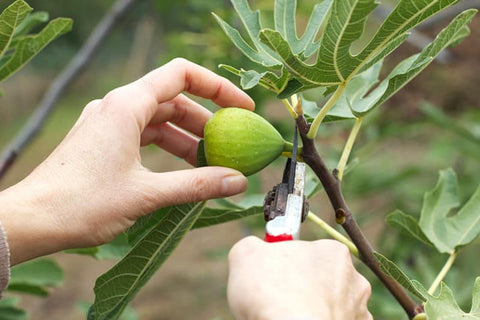Cucumbers are a popular addition to home gardens, prized for their crisp texture and refreshing flavor. However, their vining growth habit can present challenges, particularly in small or crowded garden spaces. Fortunately, trellising offers an effective solution, providing support for cucumber vines while maximizing space and yield. In this blog, we'll explore the benefits of cucumber trellising, discuss different trellising techniques, and provide tips for implementing them in your garden for a successful cucumber harvest.

Benefits of Cucumber Trellising
- Space Efficiency: Trellising cucumbers allows you to grow vertically, utilizing unused vertical space in the garden. This is especially beneficial for gardeners with limited space, such as those gardening in small yards, raised beds, or containers. By training cucumbers to grow upwards, you can maximize your growing area and increase overall productivity.
- Improved Air Circulation: Cucumber trellising promotes better air circulation around the plants, reducing the risk of fungal diseases like powdery mildew and downy mildew. Good air circulation helps to keep foliage dry, preventing the development and spread of fungal spores that can negatively impact plant health and yield.
- Cleaner and Healthier Fruits: When cucumbers are trellised, the fruits are less likely to come into contact with the soil, reducing the risk of soilborne diseases and pests. Trellising also helps to keep cucumbers off the ground, preventing them from becoming misshapen or developing blemishes caused by contact with soil or debris.
- Easier Harvesting: Trellising makes it easier to harvest cucumbers, as the fruits are more visible and accessible when growing vertically. You can simply reach up and pick the cucumbers without bending or stooping, reducing strain on your back and making the harvesting process more efficient and enjoyable.

Cucumber Trellising Techniques
- A-Frame Trellis: An A-frame trellis consists of two angled supports joined at the top to form an inverted "V" shape. Cucumber vines are trained to climb up the trellis, with the fruits hanging down below. A-frame trellises are easy to construct using materials like bamboo stakes, wooden poles, or PVC pipes, and they provide sturdy support for cucumber vines.
- Trellis Netting: Trellis netting is a versatile and space-saving option for supporting cucumber vines. It consists of a grid-like mesh that is stretched between vertical supports, providing a framework for cucumbers to climb. Trellis netting can be attached to existing structures like fences, walls, or arbors, or it can be supported by stakes or posts placed at regular intervals along the row.
- Cattle Panel Trellis: Cattle panels, also known as livestock panels or hog panels, make excellent trellises for cucumbers. These sturdy wire mesh panels are designed to withstand heavy loads and provide strong support for vining plants. Simply install the panels vertically in the garden and train cucumber vines to climb up them. Cattle panel trellises are durable, long-lasting, and ideal for larger garden plots.
- String Trellis: String trellises are a simple and cost-effective way to support cucumber vines. They consist of vertical stakes or posts with horizontal strings or wires stretched between them. As the cucumber vines grow, they are gently tied to the strings using soft garden twine or plant clips. String trellises are easy to set up and adjust as needed, making them suitable for gardens of all sizes.

Tips for Implementing Cucumber Trellising
- Choose the Right Trellis: Consider the size of your garden, the number of cucumber plants you plan to grow, and the available space when selecting a trellising method. Choose a trellis that is sturdy enough to support the weight of mature cucumber plants and fruits.
- Train Cucumber Vines Early: Start training cucumber vines to climb the trellis as soon as they begin to grow. Gently guide the vines upward and secure them to the trellis using soft ties or clips. Regularly check the vines and adjust them as needed to ensure they remain properly supported.
- Provide Adequate Support: Make sure the trellis is securely anchored in the ground to prevent it from tipping over or collapsing under the weight of the vines. Use sturdy materials like wooden stakes, metal posts, or concrete blocks to support the trellis and keep it stable throughout the growing season.
- Prune Cucumber Plants: Prune cucumber plants regularly to remove excess foliage and encourage upward growth. Remove any side shoots or suckers that develop along the main stem, as well as any damaged or diseased leaves. This will help to enhance air circulation around the plants and reduce the risk of fungal diseases.
Conclusion
Cucumber trellising offers numerous benefits for home gardeners, including increased space efficiency, improved air circulation, cleaner and healthier fruits, and easier harvesting. By choosing the right trellising method, training cucumber vines early, providing adequate support, and pruning plants as needed, you can enjoy a bountiful harvest of delicious, homegrown cucumbers all season long. Whether you opt for an A-frame trellis, trellis netting, cattle panel trellis, or string trellis, implementing cucumber trellising techniques will help you make the most of your garden space while enhancing plant health and productivity.









